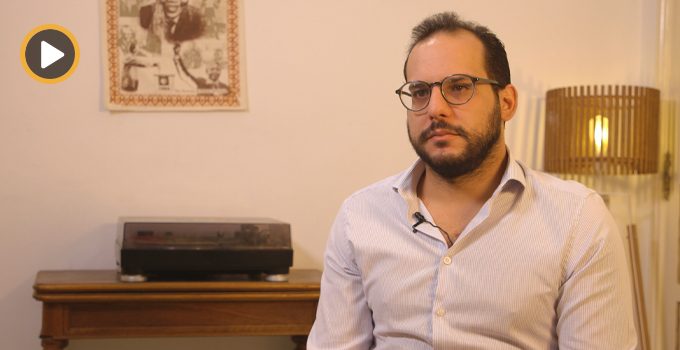
I came across this letter by Patrick Raleig in which he respond to an article by M.B.A which was published by Nawaat. Well, I am a little behind the curve here but given the importance of this issue, I couldn’t retain myself from writing the following lines.
First of all, the failure of the rating agencies before the subprime crisis is complete and total. That’s an undeniable fact and the huge effort that those agencies are making to restore their credibility will not, in any way, change that fact. And you should not listen to anyone who is telling you otherwise even if that person is Patrick Raleig.
For those who are not familiar with the technicalities, let me give a very simple analogy of what happened: consider a market for used cars. Suppose that, before entering this market, the law requires every seller to have his cars’ condition examined by a technician who assigns one of two grades: GOOD or BAD. The technician fees are paid by the sellers. Suppose also that there are only three technicians available and they compete to maximize their respective fees.
It’s very clear here that we have a conflict of interest situation since all three technicians will be tempted to systematically give GOOD rating to every car in order to maximize their profits. Now if the buyers rely exclusively on the GOOD/BAD evaluations, they face the risk to buy junk cars thinking they’ve made pretty good deals. This is exactly what happened with the rating agencies. They’ve given junk securities AAA grades because they feared for their profits.
Now, one might ask who am I to judge these giants? Well, you have every right to question my judgements since I’m not speaking from authority here. But let’s see what the most prominent economists in the world are saying about these agencies:
It’s comforting to pretend that the financial crisis was caused by nothing more than honest errors. But it wasn’t; it was, in large part, the result of a corrupt system. And the rating agencies were a big part of that corruption.
Paul Krugman
The rating agencies as one of the key culprits… They were the party that performed the alchemy that converted the securities from F-rated to A-rated. The banks could not have done what they did without the complicity of the rating agencies.
Joseph Stiglitz
These agencies have repeatedly been proved wrong; they have flawed and frequently conflicted business models; and their ratings have no predictive power. All this is well established. Moreover, when it comes to assessing sovereign debt “credit risk” they – and I mean this quite literally – do not know what they are talking about. By that, I mean they quite simply don’t understand what they themselves are saying.
Jonathan Portes
John Bellows via Brad DeLong: “The Rating Agency Clown Show: S&P claims that their $2 trillion baseline error is “not material.” John Belliows watches them put on their rubber noses and throw the custard pies at each other”.
Better still, there is a multitude of former rating agencies employees who totally agree with the above. For example: William Harrington (a former senior president at Moody’s), Frank Raiter (a former Managing Director at S&P), Mark Froeba (a former Senior Vice President at Moody’s), etc.
So, I’m really having a hard time here seeing the point of Mr. Raleig’s letter. Maybe he thought that by arrogantly bulling M.B.A he could single-handedly restore the aura of prestige that the rating agencies enjoyed before the subprime crisis came along. Obviously he was very wrong!




but who the f*** is Patrick Raleigh!! the guy has a first degree in languages and claiming to be an economist by just studying economics for just 2 years and part time!!
check out his linkedin profile: http://uk.linkedin.com/pub/patrick-raleigh/28/39/b8a
[…] Lire cet article sur Nawaat. […]
Rating agencies didn’t tag C assets as AAA. They tagged AAA assets as AAA. The problem is, many of these assets (companies) were actually exposed by a credit default swap to other assets (which are the C assets). A crisis is like a bank run. The bank can be perfectly fine and has a good balance but end up defaulting since it can’t meet the demands of depositors.
I’m not defending these ratings agencies. I think most of their work/analysis is shady. But isn’t this the case for most of the financial sector.
@Abid Omar
With all due respect, I don’t get your point!
So either you’re right or I’m right. But we can’t be both right at the same time.
First, these agencies indeed gave AAA grades to junk securities. The word securities here refers to MBS, RMBS, CMBS, CDOs, etc. which were backed by sub-prime mortgages. Hence, my claim is true.
Second, suppose that I meant firm’s financial health (I think this is what you’re referring to). Take for example the case of Lehman Brothers. Its exposition to the aforementioned securities was huuuuuge. But its rating never reflected that risk until few days before its collapse. So, if the rating agencies have done their job, they would have downgraded Lehman Brothers much more earlier than that. But they didn’t. Because either they are so dump to see the collapse coming (which is true!) or (worse) their business model is rotten to the core (again true!).
Thank you for your comment anyway !
The junk securities were insured by AAA companies, so they become AAA securities. (Think about debt that Tunisia take if it is insured by the US. it’s an AAA debt). A crisis is like a bank run. You can have a healthy bank collapse if everyone freaked out. Sure they made mistakes and they could have done a better job. But that doesn’t make them insolvent.
@ Abid Omar this article refers to a previous one by M.B.A. I advise you to read it so you understand what’s being discussed here.
Im no economist but the subject interest me, and honestly you spoiled the fun of this intellectual exchange with your lame and suspicious comments ( which are also repetitive btw)
On another note, I really appreciate Mariem’s work, this article and Nawaat as a whole. I hope many tunisians start looking at the crucial issues like this one, rather than being like sheep ready for slaughter.
[…] worst part is that, even if they hardly understand what they are saying, the Big 3 (crows) wield a tremendous destructive power. The kind of power that could make us much […]
[…] à travers le jeu de la notation de la solvabilité financière ou rating, propres aux agences de notations (Moody’s, Standard and Poors, Fitch Ratings), les capacités […]